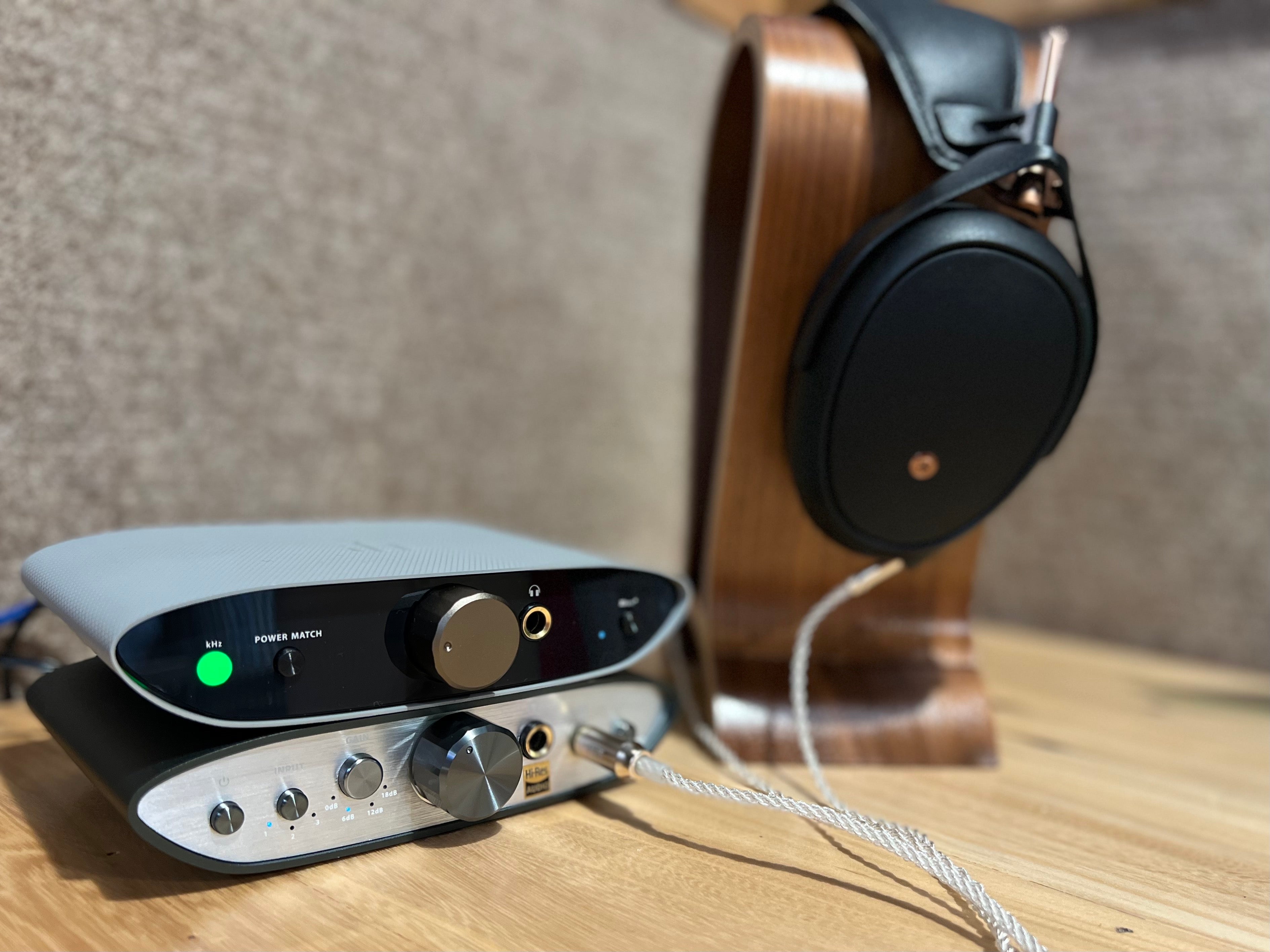iFi ZEN Air DAC joins iFi ZEN Air Blue as the first entries in iFi’s new ZEN Air series. The iFi ZEN series is known for providing an array of high quality options for DACs, Amps, and even Streamers for under $500 – often under $200. ZEN Air takes this to the next level by shooting for that same level of sound quality at a $99 price point. So let’s look at what’s the same, what’s different, and how the ZEN Air DAC performs in its own right.
Build and Design
ZEN DAC Air takes the core ZEN style and the basics of the ZEN DAC, but simplifies things a little bit. The aluminum case is replaced with a plastic one, and the ZEN Air DAC is 100% single-ended with no balanced outputs. On the front, you get a bitrate indicator, the Power Match button, the volume knob, a 6.3mm output, and the Xbass+ switch. On the back you get your power jack, a USB input, and RCA outputs.
The box looks a lot like any other ZEN Box, and the ZEN Air DAC itself is inside, along with a USB power cable, a USB A to B data cable, and the quickstart guide. Basically, you get everything you need to get connected with your headphones, and nothing more. While a full manual isn’t included in the package, there’s a full manual available online to fully explain the features and usage: https://ifi-audio.com/product-guides/
Using ZEN DAC Air
ZEN Air DAC’s interface consists of two buttons, some lights, and a volume knob. The first button is the Power Match feature, which is basically a high/low gain mode. With the light off, you’re in low gain mode, and the output is more appropriate for IEMs or very high sensitivity headphones. Press the button to switch to high gain mode, which provides the appropriate output for most over-ear headphones.
The volume knob is pretty self-explanatory: it’s a smooth analog knob that provides an even response across its full range. XBass+ gives you a smooth analog boost to the bass – particularly the lower and subbass regions. I’ve always been a big fan of XBass, and it’s also worth noting that it hits a little harder than the True Bass on the ZEN DAC V2, making it one way the ZEN Air DAC has a small advantage.
For connections, you have the headphone output on the front, and RCA outputs on the back. The RCA inputs can be used to connect to an external amp, or to a set of powered speakers. The only input is through USB, and the LED light on the left side of the device indicates the format of the audio input through USB.
Sound and Performance
On the technical end, ZEN Air DAC is essentially the same core electronics as the standard ZEN DAC, which means that at the cost of balanced outputs and a downgrade in the build, you’re getting the same sound signature and (single-ended) performance as the ZEN DAC.
iFi is known for DACs that provide top notch detail, with an output that’s just a little bit warm and smooth – something that provides reference level detail, but with a touch of musical sweetness. Through some combination of magic and engineering, ZEN Air DAC manages to deliver all of these things in a lightweight $99 package.
The general tonality is neutral and transparent, and the timbre natural, but there’s just a little bit of taming in the highs, and a little bit of extra warmth in the mids that really delivers that signature sound. Turning on XBass+ takes it to another level by bringing up the subbass and adding depth and rumble to the sound.

The imaging is solid, especially considering the price, but with the built in amp, the soundstage is on the smaller side and the dynamic range is somewhat shallow. Part of this is because the built-in headphone output isn’t particularly powerful. At 3.3V it pairs quite well with many dynamic headphones or more sensitive planar magnetic headphones like the HIFIMAN Ananda, but will come up short with anything much harder to drive than an LCD-X. As you push the limits of its power, you’ll also end up feeling those lessened dynamics and smaller soundstage a bit more.
Of course, you can also connect it to an external amp, and then the ZEN Air DAC can really demonstrate its strengths. The soundstage and dynamics are vastly improved, even just with an iFi ZEN CAN, and plugging it into a higher end amp like the Burson Soloist GT helps demonstrate the real depth of ZEN Air DAC’s ability to deliver a wide, detailed 3D image. Don’t expect Chord Qutest levels of precision, separation, and imaging, but do expect to be wowed by what you can get out of a $99 DAC.
The Bottom Line
The iFi ZEN DAC was always a great entry point into desktop HiFi audio, and in this inflationary age of rising prices, iFi has worked some magic in delivering great performance with an even greater value. While it’s not going to be a standalone solution for hard to drive headphones, it shines with sensitive headphones, or with a separate amp. In the end, ZEN Air DAC delivers on taking the value of the ZEN series to new heights.






